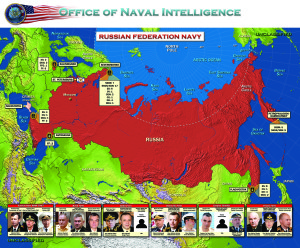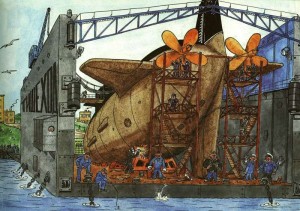(No, not the magazine…)
One of the most egregious among his many blunders of fact during the debate was when Mr. McCain “corrected” Mr. Obama on a particular set of terms… while being blissfully unaware he was getting it wrong.
From the transcript:
*^*^*
OBAMA: (The soldiers in The Surge) have done a brilliant job, and General Petraeus has done a brilliant job. But understand, that was a tactic designed to contain the damage of the previous four years of mismanagement of this war.
And so John likes — John, you like to pretend like the war started in 2007. You talk about the surge. The war started in 2003, and at the time when the war started, you said it was going to be quick and easy. You said we knew where the weapons of mass destruction were. You were wrong.
You said that we were going to be greeted as liberators. You were wrong. You said that there was no history of violence between Shiite and Sunni. And you were wrong. And so my question is…
LEHRER: Senator Obama…
OBAMA: … of judgment, of whether or not — of whether or not — if the question is who is best-equipped as the next president to make good decisions about how we use our military, how we make sure that we are prepared and ready for the next conflict, then I think we can take a look at our judgment.
LEHRER: I have got a lot on the plate here…
MCCAIN: I’m afraid Senator Obama doesn’t understand the difference between a tactic and a strategy.
*^*^*
McCain hasn’t been in the active military since 1981. And he was 894th out of 899 in his Annapolis class of 1958. So perhaps it’s understandable why he went astray.
But, here’s what the Army currently says in field manual FM-3, Operations:
*^*^*
THE STRATEGIC LEVEL
2-4. The strategic level is that level at which a nation, often as one of a group of nations, determines national and multinational security objectives and guidance and develops and uses national resources to accomplish them. Strategy is the art and science of developing and employing armed forces and other instruments of national power in a synchronized fashion to secure national or multinational objectives. The National Command Authorities (NCA) translate policy into national strategic military objectives. These national strategic objectives facilitate theater strategic planning. Military strategy, derived from policy, is the basis for all operations (see JP 3-0). (emphasis in original)
*^*^*
So, strategy is the big picture stuff. “We will be victorious in Iraq to foster democracy in the Middle East,” is a strategy. “We will address the threat of the Soviet Union by containing them in a cordon of surrounding allied countries,” is a strategy.
Strategy answers the question, “What do you want?”
*^*^*
THE OPERATIONAL LEVEL
2-5. The operational level of war is the level at which campaigns and major operations are conducted and sustained to accomplish strategic objectives within theaters or areas of operations (AOs). It links the tactical employment of forces to strategic objectives. The focus at this level is on operational art—the use of military forces to achieve strategic goals through the design, organization, integration, and conduct of theater strategies, campaigns, major operations, and battles. A campaign is a related series of military operations aimed at accomplishing a strategic or operational objective within a given time and space. A major operation is a series of tactical actions (battles, engagements, strikes) conducted by various combat forces of a single or several services, coordinated in time and place, to accomplish operational, and sometimes strategic objectives in an operational area. These actions are conducted simultaneously or sequentially under a common plan and are controlled by a single commander. Operational art determines when, where, and for what purpose major forces are employed to influence the enemy disposition before combat. It governs the deployment of those forces, their commitment to or withdrawal from battle, and the arrangement of battles and major operations to achieve operational and strategic objectives. Figure 2-1 illustrates the link between the levels of war and the plans and actions of military forces. (emphasis in original)
*^*^*
Tactics, then, answers the question, “How are you going to get what you want?”
From this definition, it’s clear The Surge is a major operation. It’s a series of tactical operations, with the strategic goal of keeping violence in Iraq at a manageable level while the political infrastructure is built by the Iraqis.
Tactically it’s been a great success. Petraeus and his troops have executed very well.
But strategically it’s been a failure. Because instead of taking advantage of the relative calm The Surge has provided them, the Iraqi political leadership has stalled in so many different ways to make Congress’ performance this week the very model of effectiveness. (Thus the ghost of Garrison Keillor: “It could always be worse…”)
But more than that… I’m not alone in noticing this. Jim Fallows quotes “a retired (1999) Army colonel” to the same point. Even more damningly, in some ways, was this post by Jim on McCain’s personal ignorance of strategy vs. tactics:
“There has been no greater contrast between the Obama and McCain campaigns than the tactical-vs-strategic difference, with McCain demonstrating the primacy of short-term tactics and Obama sticking to a more coherent long-term strategy. And McCain’s dismissive comment suggests that he still does not realize this.”
And remember, folks… The military stuff is what McCain thinks he’s good at.


